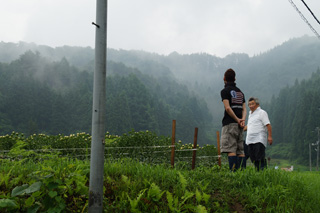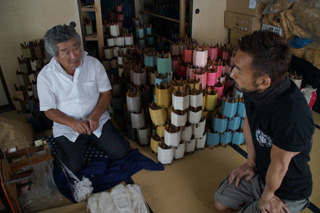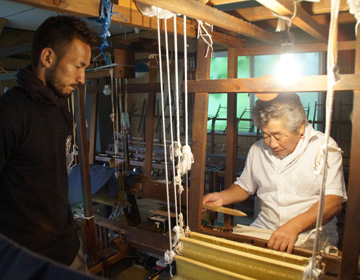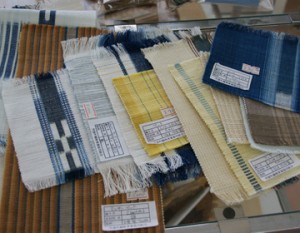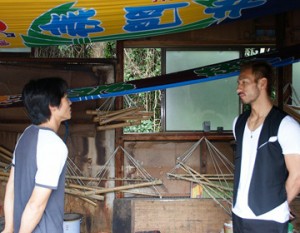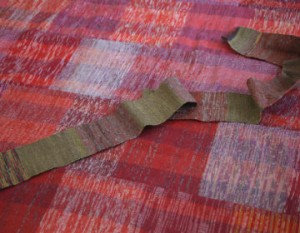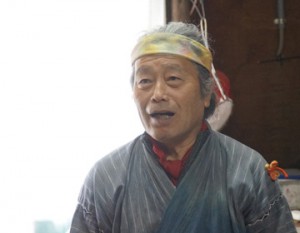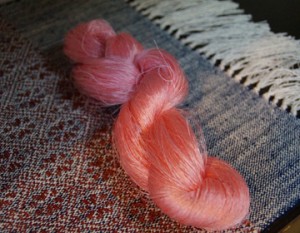Not getting old, even over time
“This doesn’t look old even now, does it?”
Koichi Yamagishi said as he handed Nakata a piece of textile that he wove in 1971, By “doesn’t look old”, you may imagine that the design was still modern, but no. The fabric that Yamagishi handed to Nakata was literally not old. There was not a trace of the color fading. In fact, the colors made a distinct impression, capturing our eye. “This is the good thing about plant-based dye.” Explained Yamagishi. However, ”getting old” does not mean something doesn’t or shouldn’t change. “In current day Japan, the emphasis is on the present, and not changing at all is considered to be a good thing. However, in the past, changing was good. It improved the subtle shades or texture, or such. ”Not becoming old or outdated” can only happen if things can change.””
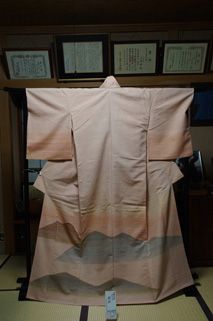
Aiming for the best, starting with thread
Yamagishi is a plant-dyeing artist who undertakes the entire process from dyeing to weaving. His family business was weaving, but as he progressed, he became interested in dyeing. At first, he was using threads dyed with chemical dyes, but he learned about plant dyeing from the artist Seiju Yamazaki, and became strongly attracted to plant dyeing. Since then, he collected various materials and finally settled down at the current location in Akakuzure, where the ideal growing conditions exist. He now grows his own silkworms, and undertakes the entire process from spinning his own thread. In addition, he grows his own safflower and other plants he needs for dyeing. His policy is to grow all the materials he uses on his own.
“Gee, that must really take a lot of work.” Nakata said.
“Yes, but now I know what is good and I can’t go back.” He told Nakata.
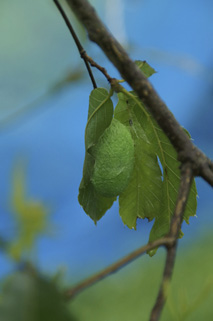
Distortion fits the body
During his father’s generation, people’s clothing was changing from Japanese clothing to western clothing. So, people sought to catch up with the western world.
However, as he produced western dresses with a Jacquard loom, he started to feel that something wasn’t right.
So, he tried weaving with a manual loom after hours. He compared the difference between machine woven and manually woven products with the same design. They were completely different. He had some puzzling experiences. For instance, the hand-woven products did not leave an imprint of the fingers even when pressed hard.
Yamagishi says that the charm of hand-woven ”kimono” is in the distortion. “The distortion is what makes it easy to wear. When you put it on, people’s faces stand out. It makes the person wearing it stand out. Machine woven ”kimono” lacks this quality.“ Yamagishi told us.
His comments made us think about the process of detailed observation, deep thought and consideration, and applying the findings into creating a ”kimono”. Yamagishi will continue to think about what clothing is, what threads are, and what colors mean? He will continue his quest for dyeing and weaving one by one.
